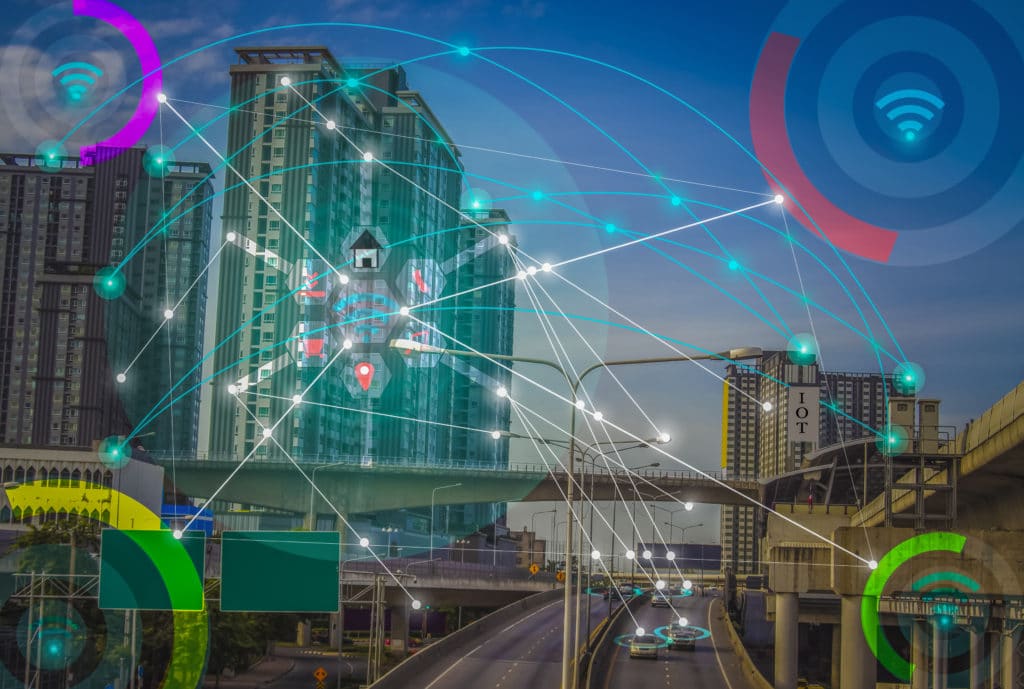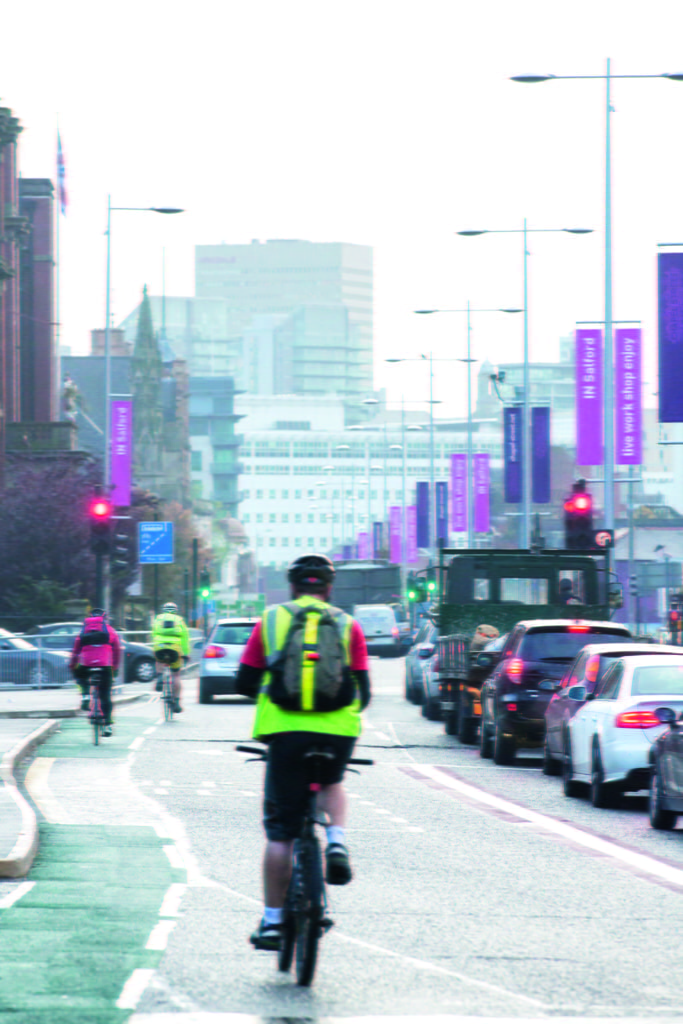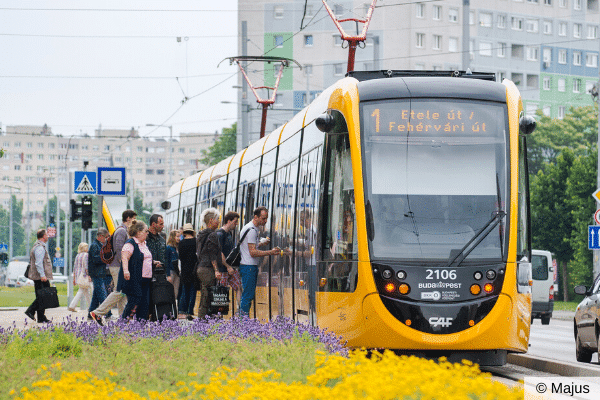Past Events
14/04/2020


14/04/2020
New Cities webinar: public transport after COVID-19
As the coronavirus pandemic brings urban life around the globe to a halt, it’s time to present our new digital initiative tackling the impacts of Covid-19 on city-making and city-planning around the...
Read more
Online
14/04/2020


14/04/2020
SOLUTIONSplus webinar: Management of public transport to contain COVID-19
This webinar from SOLUTIONSplus brings together three partner cities, Nanjing, Madrid and Hamburg to present the strategies being employed by public transport providers to support containment of the C...
Read more
Online
09/04/2020


09/04/2020
Busworld webinar: Government and the survival of the bus industry in COVID-19
Passenger transport is facing multiple challenges in the COVID-19 crisis. Several key issues are arising:
Economic and financial measures to keep bus & coach operators in business
Measures...
Read more
Online
08/04/2020


08/04/2020
Webinar: Public transit in the time of COVID-19
Want to learn how transit agencies are handling their COVID-19 response? Join schedulers, planners and operations staff tackling the crisis. In this “ask me anything” webinar, use our interactive...
Read more
Online
08/04/2020


08/04/2020
Webinar: Street Planning During Uncertain Times
COVID-19 has disrupted daily life and transportation services around the world. Many cities around the world are helping to create more space for bicyclists and pedestrians with street closures and...
Read more
Online
07/04/2020


07/04/2020
NewCities webinar: The Big Rethink — Cities After COVID-19
As the coronavirus pandemic brings urban life around the globe to a halt, NewCities is launching a new weekly online conversation series, The Big Rethink: Cities After COVID-19.
Given this unpreced...
Read more
Online
07/04/2020


07/04/2020
Polis Road Safety Working Group meeting
Road Safety in European cities and regions is at a turning point. The European Union has set ambitious goals for reducing traffic deaths and serious injuries, but over the past decade progress has sta...
Read more
Online
03/04/2020


03/04/2020
Intelligent Cities Challenge COVID-19 webinar
To help cities navigate the current crisis and implement appropriate responses, the European Commission’s Intelligent Cities Challenge is launching a wider support package for COVID-19 to facilitate...
Read more
Online
03/04/2020


03/04/2020
NEW DATE! Polis webinar on Small and medium-sized cities
The COVID-19 pandemic is heavily impacting our society. New drastic measures are being taken every day by an increasing number of countries, including Belgium. For this reason, the SMC webinar has bee...
Read more
Webinar
03/04/2020


03/04/2020
SLOCAT: COVID-19 — Lessons learnt and outlooks for sustainable transport
This global health crisis is a game changer, shining a light on the inextricably linked social, economic, and environmental matters our societies must crucially address, as well as on our poor emergen...
Read more
Online
03/04/2020


03/04/2020
Webinar: Opportunities to tackle the COVID-19 Crisis through Innovation Procurement
The European Assistance For Innovation Procurement (EAFIP) is organizing a one-hour webinar to provide guidance to public buyers on how to proceed in the short, middle and long term in procuring the s...
Read more
Online
02/04/2020


02/04/2020
TUMI webinar: COVID-19 and tactical urbanism
Join TUMI and NUMO for a webinar to discuss tactical urbanism quick responses to the COVID-19 crisis.
Speakers include:
Mike Lydon, acclaimed international expert on tactical urbanism wil...
Read more
Online
01/04/2020 - 03/04/2020


01/04/2020 - 03/04/2020
URBAN FUTURE Global Conference — POSTPONED
*Please note the UFGC event has been cancelled. We will update this page should new information become available*.
The URBAN FUTURE global conference, of which Polis is a partner, is Europe’s large...
Read more
Lisbon, Portugal
31/03/2020 - 02/04/2020


31/03/2020 - 02/04/2020
Web-events on Zero Emission Zones for freight delivery
The aim of this work is to define the purpose, common objectives and identify the benefits of introducing ZEZ for freight in urban areas before 2030...
Read more
Online
30/03/2020 - 31/03/2020


30/03/2020 - 31/03/2020
EUROPEANMOBILITYWEEK Workshops and Award Ceremony 2020
On 30-31 March 2020, national and local campaigners will meet online to exchange ideas and gain inspiration to organise EUROPEANMOBILITYWEEK from 16-22 September 2020. During 30 March, the European Co...
Read more
Brussels
30/03/2020


30/03/2020
Remix: Transportation Policy Series with Jarrett Walker
Over the next two weeks Remix is hosting an expert discussion with industry leaders.
This webinar features Jarrett Walker, an international consultant in public transit network design and policy, a...
Read more
Online
26/03/2020


26/03/2020
INRIX: Understanding the Impact of COVID-19 on Our Cities & Transportation Networks
The outbreak of COVID-19 has already had dramatic changes on behavior throughout the cities who have been hit hardest by this fast moving outbreak. These changes are likely to only grow more severe as...
Read more
Online
26/03/2020


26/03/2020
Polis Working Group meeting – Traffic Efficiency (online)
The next meeting of the Polis Traffic Efficiency Working Group (WG) will take place on 26 March and will focus on the theme of vehicle automation and its implications for urban and regional mobility....
Read more
Online
25/03/2020 - 26/03/2020


25/03/2020 - 26/03/2020
CoEXist Final Conference
The CoEXist Final Conference will take place in Milton Keynes (UK), on 25-26 March 2020....
Read more
Milton Keynes, UK
20/03/2020


20/03/2020
Webinar: Combating COVID-19 in the transport sector
On March 11th, the World Health Organization (WHO) has declared COVID-19 a global pandemic. Transport and in particular public transport, is on the one hand a vector for global and local distribution...
Read more
Online
11/03/2020


11/03/2020
GECKO Webinar: Managing New Mobility: How to Regulate E-Scooters
Join the GECKO project on Wednesday, March 11th at 11:00 – 12:15 CET for a webinar:
Managing New Mobility: How to Regulate E-Scooters
The webinar will provide an overview of regulations around...
Read more
Online
04/03/2020


04/03/2020
Covenant of Mayors Ceremony and European Climate Pact announcement event
The European Green Deal is a new roadmap for Europe's economy and society to become climate-neutral by 2050. How? By turning climate and environmental challenges into opportunities across all policy...
Read more
Brussels, Belgium
25/02/2020


25/02/2020
MORE TEN-T Corridor Workshop
The MORE TEN-T Corridor Workshop will be held in Budapest, 25th of February 2020, 11.00-18.00.
The workshop addresses common challenges and solutions of the metropolitan areas (so called ‘urban n...
Read more
Budapest, Hungary
19/02/2020 - 20/02/2020


19/02/2020 - 20/02/2020
3rd Global Ministerial Conference on Road Safety
Sweden is to host the 3rd Global Ministerial Conference on Road Safety on 19–20 February 2020 at Waterfront Congress Centre in Stockholm. The conference will be co-sponsored by the World Health Orga...
Read more
Stockholm, Sweden
19/02/2020


19/02/2020
SUMPs-Up final event: Developing sound sustainable urban mobility plans
The CIVITAS SUMPs-Up project invites you to join its final event on how they have helped shape Europe’s SUMP landscape and join decision-makers, mobility experts and towns and cities to discuss SUMP...
Read more
Brussels, Belgium
18/02/2020


18/02/2020
Increasing safety for unprotected road users – Stockholm & CIVITAS Eccentric Workshop
On the afternoon of February 18, 2020, CIVITAS Eccentric and the City of Stockholm will host a workshop on the topic of safe walking and cycling....
Read more
Stockholm, Sweden
11/02/2020 - 12/02/2020


11/02/2020 - 12/02/2020
MOVE2020: Mobility Re-Imagined
MOVE2020 is a mobility event where disruptive technology and innovation drive much-needed change. MOVE brings together disruptors, their technology and their attitude with stakeholders across all mode...
Read more
ExCeL London, One Western Gateway, Royal Victoria Dock - E16 1XL, London
05/02/2020 - 06/02/2020


05/02/2020 - 06/02/2020
Polis Working Group meeting – Clean Vehicles & Air Quality
The Polis Working Group on Clean Vehicles & Air Quality (WG CV & AQ) will meet on 5 & 6 February 2020 and will discuss issues related to air quality and vehicles emissions....
Read more
Brussels, Belgium
10/12/2019


10/12/2019
Joint Polis-ERRIN Workshop: Financing the Future of Mobility
The Members-only joint Polis-ERRIN Workshop 'Financing the Future of Mobility' presents the different funding opportunities to promote clean, sustainable and innovative transport projects and ti...
Read more
Polis, Brussels
07/12/2019


07/12/2019
COP25 Workshop “Mobility and climate change: The integrated approach of cities”
This COP25 workshop will show how cities are tackling transport sector's challenges and which planning tools, measures and solutions are being deployed. ...
Read more
IFEMA exhibition centre, Madrid, Spain
04/12/2019 - 05/12/2019


04/12/2019 - 05/12/2019
#H2020RTR 2019 European Conference
ERTRAC, EGVIA and the European Commission organise the 3rd European conference dedicated to the presentation of results from road transport research in H2020 funded projects - #H2020RTR Conference....
Read more
Albert Borschette Conference Center (CCAB), Brussels
29/11/2019


29/11/2019
3rd Polis-ALICE Urban Freight public-private dialogue meeting
Polis-ALICE members-only meeting!
Agenda here.
Registration here.
At this event, Polis members and private freight operators will convene to discuss common challenges and collaborative solu...
Read more
Brussels, Belgium